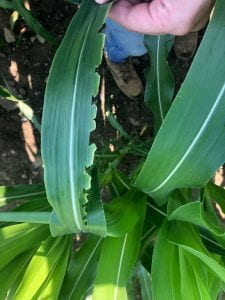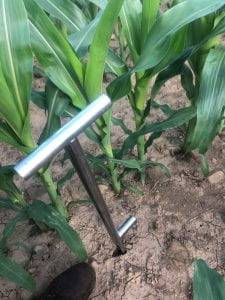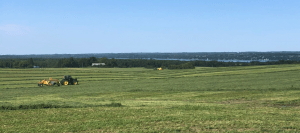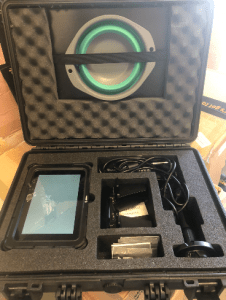Scouting Fun – Soil, Worms, Slugs, and Bugs
July 8th
The last two weeks have cruised by! I have been busy learning more about the crop management process. The first step to addressing any problem is making a diagnosis! So, with some guidance, I have taken to the fields for some scouting to observe the corn’s progress and determine if any management strategies have to be tweaked.
Some of the things we were on the lookout for were physical damage to the corn, weed presence, overall size and appearance indicating health and nutrient availability, plant viruses/diseases, pest damage and which pests, and overall field conditions or anything that could affect the crop’s growth. While in the fields, we also took selective soil samples to measure how the weather had influenced nutrient availability and determine if additional fertilizer was needed.
I was able to find some interesting indicators in some fields.
Some signs of pests:
An interesting and more damaging pest than the smaller scale ones above; we had one instance of cutworm. The conditions and field history have to be exactly right for the cutworm to be an issue, so it was an interesting ailment to see.

As the name describes, the damage from the cutworm eats right through the main stem of the young plant, and cuts it in half.
I also found some things that look like signs of pests but are deceiving! These cuts along the edge of the corn leaf look like very uniform bites but is in fact an instance of damage where the corn was growing too fast for the structures to keep up, resulting in damage.
Also, some random and isolated signs of virus that can actually be very aesthetically pleasing.

This virus gave the corn a vibrant yellow streaked appearance
And along the way taking soil samples for soil nutrient testing!
After looking at the field conditions, crop conditions, and the soil sample results, we will be able to manage the fields that need some extra attention. The one field with cutworm can be managed for pest control, and fields that result low in nutrients can receive some extra applications before the corn grows too tall. With these measurements and observations the farm can ensure they are doing all they can to achieve a productive yield.




















